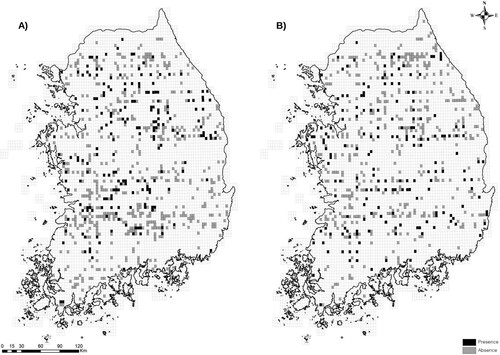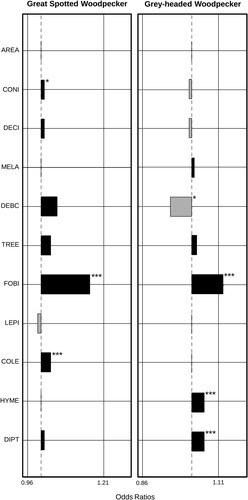Figures & data
Figure 1. Distribution of the Great Spotted Woodpecker Dendrocopos major (A) and the Grey-headed Woodpecker Picus canus (B) in South Korea based on the National Ecosystem Survey conducted from 2006 to 2018. The grid squares and recording units were approximately 3.8 km × 4.6 km. Black indicates presence and grey indicates absence.

Figure 2. Results of the binary logistic model based on large-scale public data for South Korea with the occurrence of the Great Spotted Woodpecker Dendrocopos major and the Grey-headed Woodpecker Picus canus as dependent variables and forest characteristics and species richness of forest birds and insects as independent factors. AREA: the forest area, CONI: forest stands with ≥ 75% coniferous trees, DECI: forest stands with ≥ 75% deciduous trees, MELA: forest stands with ≥ 50% medium- to large-diameter trees (≥18 cm diameter at breast height), DEBC: forest stands with canopy cover greater than 50%, TREE: the number of vegetation populations composed of trees, FOBI: the species richness of forest birds, LEPI: the species richness of Lepidoptera, COLE: the species richness of Coleoptera, HYME: the species richness of Hymenoptera, and DIPT: the species richness of Diptera. Black indicates a positive correlation and grey indicates a negative correlation. *P < 0.05, ***P < 0.001.

